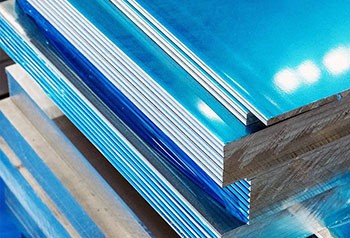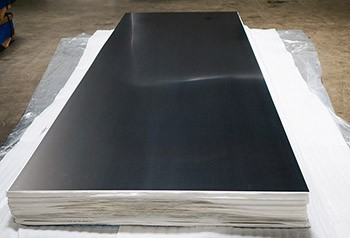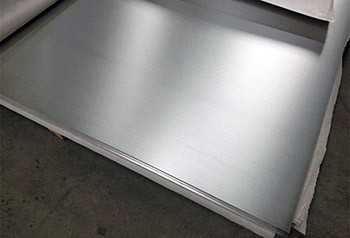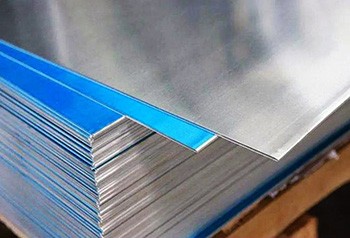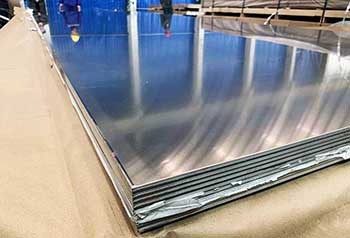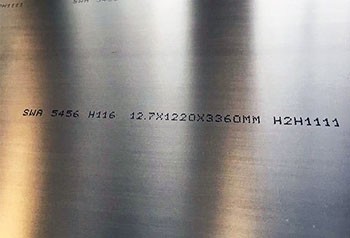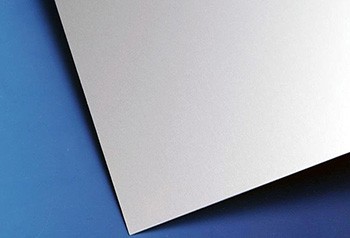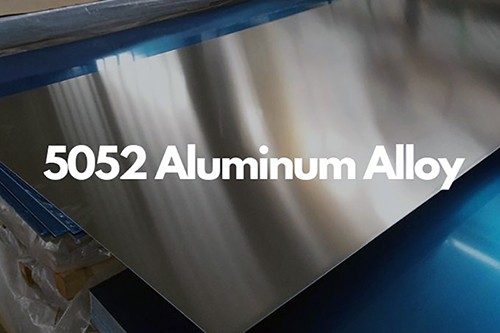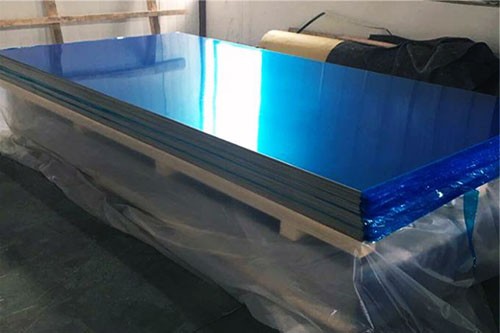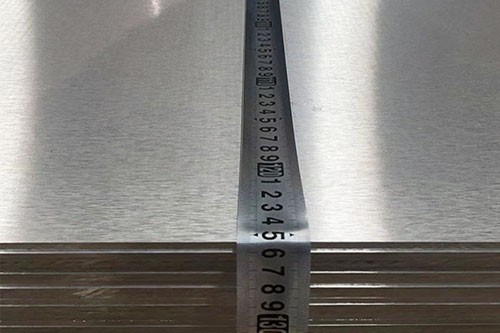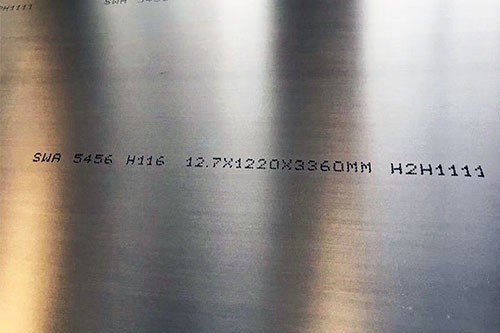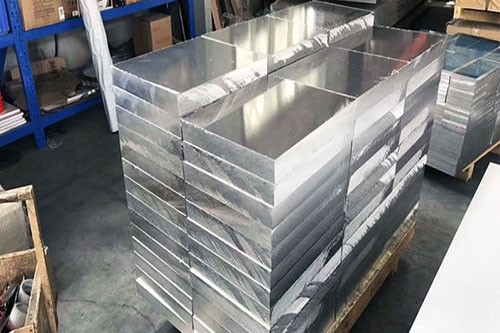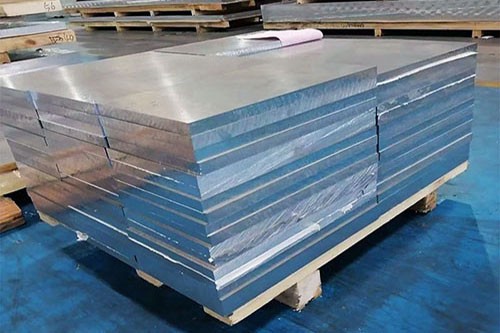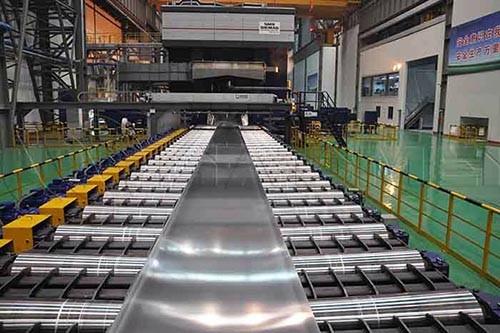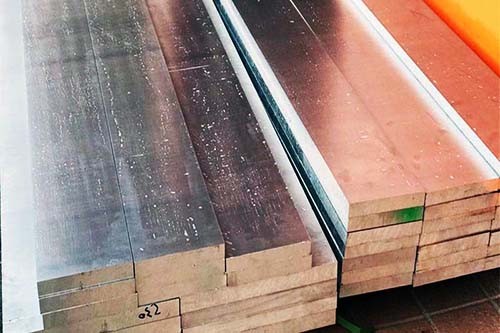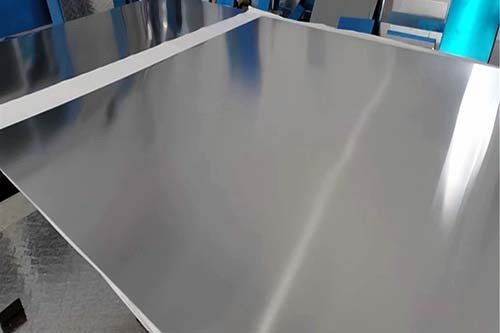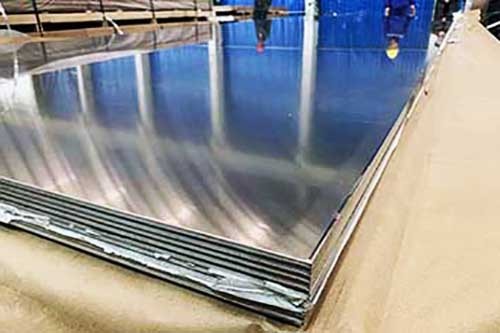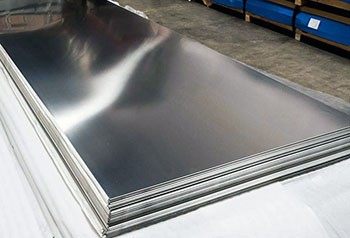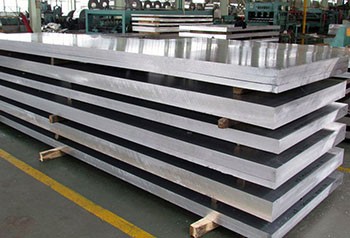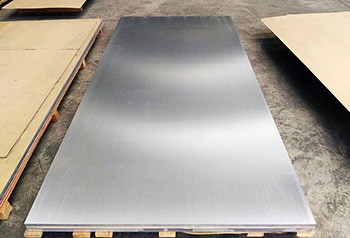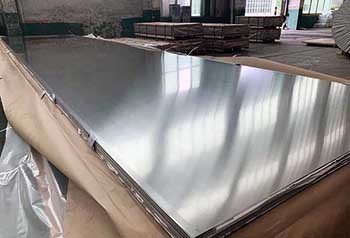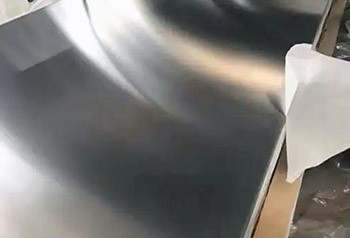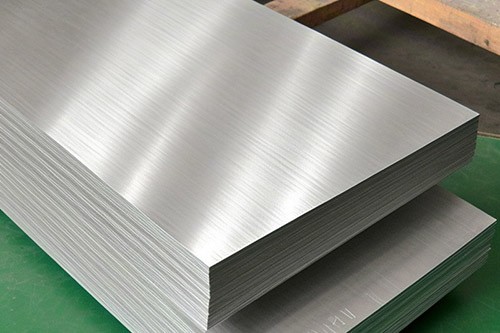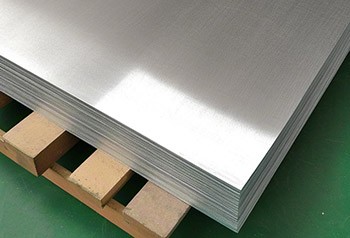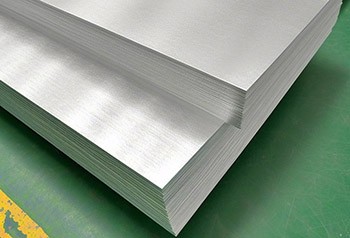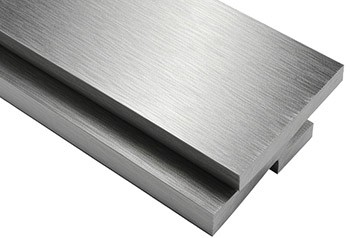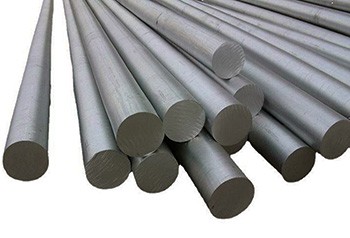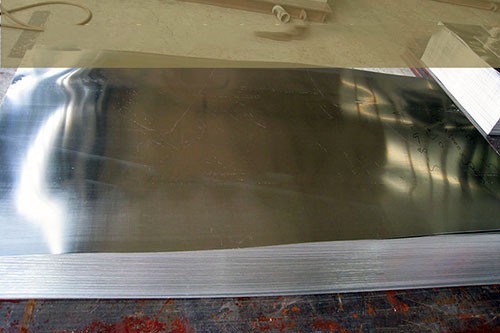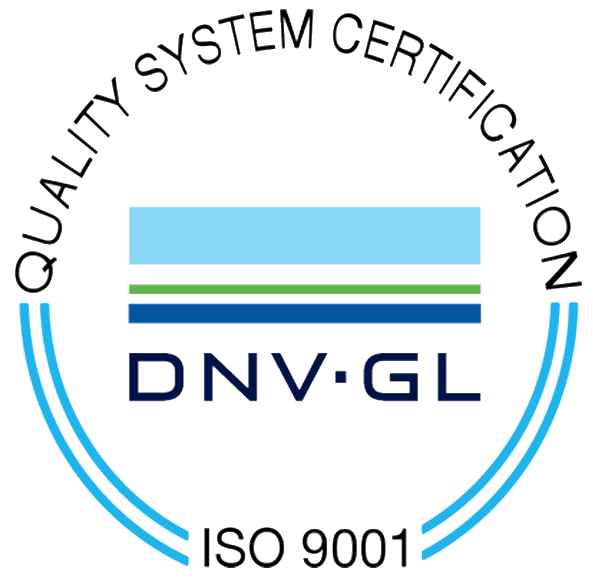5383 H321 Aluminum
5383-H321 aluminum has high strength and excellent corrosion resistance, making it suitable for high-load marine applications, especially in environments that require resistance to intergranular corrosion and exfoliation corrosion.
5383-H321 aluminum is the H321 temper of 5383 aluminum alloy, enhanced through specific strain hardening and stabilization processes to improve the material's mechanical properties. While increasing strength, it maintains good corrosion resistance. The H321 treatment ensures long-term stability of the alloy in marine environments, particularly in resisting intergranular corrosion and exfoliation corrosion.
5383-H321 aluminum is an alloy that has been enhanced through strain hardening and stabilization treatments, offering high tensile strength and yield strength. Its strength is between the annealed (O) and fully hardened (H38) states, making it suitable for high-load marine applications that require strong mechanical properties. At the same time, the H321 treatment process enhances its ability to resist intergranular corrosion and exfoliation corrosion, ensuring a longer service life in seawater and salt environments. It is ideal for use in ships, offshore platforms, and marine structures that require a balance of strength and corrosion resistance.
Characteristics of 5383-H321 Aluminum
Temper and Hardness
The H321 temper of 5383 aluminum alloy is made through strain hardening and stabilization treatments, with strength between the annealed (O) and fully hardened (H38) states, typically one-quarter of the fully hardened state’s strength.
In this process, the alloy undergoes cold working to induce strain hardening, followed by heat treatment to stabilize the alloy, thus improving its strength and durability.
Strength and Toughness
5383-H321 aluminum alloy has higher strength than the H116 temper, especially showing significant improvements in tensile strength and yield strength. This allows it to withstand higher working loads and mechanical stresses.
However, despite its higher strength, its toughness is relatively lower, making it suitable for high-load structural components that require high strength.
Resistance to Intergranular Corrosion and Exfoliation Corrosion
During the H321 treatment, the alloy’s resistance to intergranular corrosion and exfoliation corrosion is strengthened. The stabilization process effectively suppresses corrosion at grain boundaries, thus increasing the alloy's durability in marine environments.
This treatment ensures that 5383-H321 aluminum maintains good structural stability even after prolonged exposure to saltwater, humidity, and other harsh environments.
Corrosion Resistance
5383-H321 aluminum has excellent corrosion resistance, particularly excelling in seawater corrosion. Its resistance to seawater, moisture, and salt corrosion makes it an ideal material for marine engineering and shipbuilding.
Compared to other aluminum alloys, the H321 temper of 5383 aluminum alloy offers a distinct advantage in corrosion resistance, making it suitable for applications exposed to harsh environments for extended periods.
5383 H321 Aluminum Mechanical Properties
| Property | 5383-H321 Aluminum |
| Brinell Hardness | 90 |
| Elastic (Young's, Tensile) Modulus, x 10⁶ psi | 9.9 |
| Elongation at Break, % | 12 |
| Fatigue Strength, x 10³ psi | 30 |
| Poisson's Ratio | 0.33 |
| Shear Modulus, x 10⁶ psi | 3.7 |
| Shear Strength, x 10³ psi | 30 |
| Tensile Strength: Ultimate (UTS), x 10³ psi | 50 |
| Tensile Strength: Yield (Proof), x 10³ psi | 36 |
5383 H321 Aluminum Thermal Properties
| Property | 5383-H321 Aluminum |
| Latent Heat of Fusion, J/g | 390 |
| Maximum Temperature: Corrosion, °F | 150 |
| Maximum Temperature: Mechanical, °F | 400 |
| Melting Completion (Liquidus), °F | 1200 |
| Melting Onset (Solidus), °F | 1010 |
| Specific Heat Capacity, BTU/lb-°F | 0.22 |
| Thermal Conductivity, BTU/h-ft-°F | 72 |
| Thermal Expansion, µm/m-K | 24 |
5383 H321 Aluminum Electrical Properties
| Property | 5383-H321 Aluminum |
| Electrical Conductivity: Equal Volume, % IACS | 29 |
| Electrical Conductivity: Equal Weight (Specific), % IACS | 97 |
5383 H321 Aluminum Alloy Composition
| Element | Composition Range (%) |
| Aluminum (Al) | 92.0 to 95.3 |
| Magnesium (Mg) | 4.0 to 5.2 |
| Manganese (Mn) | 0.7 to 1.0 |
| Zinc (Zn) | 0.0 to 0.4 |
| Silicon (Si) | 0.0 to 0.25 |
| Chromium (Cr) | 0.0 to 0.25 |
| Iron (Fe) | 0.0 to 0.25 |
| Zirconium (Zr) | 0.0 to 0.2 |
| Copper (Cu) | 0.0 to 0.2 |
| Titanium (Ti) | 0.0 to 0.15 |
| Residuals | 0.0 to 0.15 |
5383 H321 Aluminum Applications
Due to its high strength, good corrosion resistance, and enhanced durability through stabilization treatment, 5383-H321 aluminum is widely used in marine environments that endure significant stress and high loads, especially in engineering applications that require long-term stability and high mechanical performance.
| Application | Description |
| Offshore Platforms | 5383-H321 aluminum is used in offshore platforms, especially in parts exposed to marine climates that need to withstand extreme environments and loads. These platforms often need to maintain structural stability in high salt, humidity, and fluctuating wave conditions. H321 temper aluminum alloy, with its strong corrosion resistance, is the ideal material in marine engineering for parts exposed to high mechanical stress and corrosive environments. |
| Ship Hull Frames | In shipbuilding, 5383-H321 aluminum is widely used in the manufacture of ship hull frames and ship structures. Due to its high tensile strength and yield strength, H321 aluminum alloy is suitable for components that require high strength and long-term corrosion resistance, such as the load-bearing structures and key connection parts of ships. These parts typically need to endure substantial external stresses and extreme marine environmental conditions. |
| Marine Structural Components | Due to its excellent corrosion resistance, 5383-H321 aluminum alloy is widely used in marine structural components, such as supporting structures for offshore platforms, floating structure parts, and more. These structures need to be used for long periods in harsh marine environments, facing high-strength loads and the corrosion effects of seawater, making H321 aluminum alloy the ideal choice. |
| High-Load Components | H321 aluminum alloy is widely used in the manufacture of high-load components due to its high strength and corrosion resistance, such as the foundation frames for offshore wind turbines, and critical structures in offshore oil and gas production equipment. These components often operate under extreme working conditions, needing to withstand immense pressure and strength loads, while also requiring corrosion resistance to prevent seawater from damaging the material. |
| Marine Engineering Requiring Long-Term Stability | In marine engineering projects requiring long-term stability, 5383-H321 aluminum alloy is used to manufacture components exposed to seawater for extended periods, such as marine buoys, support columns, and connection structures for offshore oil platforms. Its excellent corrosion resistance and high strength enable it to effectively withstand long-term environmental pressure, ensuring the reliability and stability of structures over time. |
5383-H321 aluminum, due to its strength and corrosion resistance, is widely used in high-load and high-stress marine environments, such as offshore platforms, ship hull frames, marine structural components, and other marine engineering parts. It is suitable for applications that require long-term durability and high mechanical performance, especially in harsh marine environments, effectively resisting seawater corrosion and mechanical wear to ensure the stability and service life of engineering structures.
Marine aluminum products you may be interested in
-
5052 Marine Grade Aluminum Plate Sheet
In seawater environments, 5052 aluminum alloy has corrosion resistance properties that are unmatched by many other materials.
-
5083 Marine Grade Aluminum Plate Sheet
5083 marine grade aluminum is an aluminum alloy specifically designed for use in marine environments. It is known for its excellent corrosion resistance and high strength, making it ideal for applications such as shipbuilding, hulls, offshore structures and other marine components.
-
5059 Marine Grade Aluminum Plate Sheet
5059 marine-grade aluminum offers many benefits to the shipbuilding industry, including reduced weight, increased load capacity, improved stability and speed, corrosion resistance and versatility.
-
5086 Marine Grade Aluminum Plate Sheet
Marine-grade aluminum alloy 5086 combines corrosion resistance, rust resistance, strength, weldability, formability and resistance to environmental factors, making it ideal for underwater components of ship hulls and other marine applications.
-
5383 Marine Grade Aluminum Plate Sheet
5383 marine grade aluminum plate has excellent corrosion resistance and high strength. Aluminum alloy 5383 is commonly used in shipbuilding and other maritime structures where durability and resistance to salt water corrosion are critical.
-
5456 Marine Grade Aluminum Plate Sheet
5456 marine grade aluminum plate is an economical choice for ship construction. Can be used on baseboards, decks and other upper fittings.
-
5754 Marine Grade Aluminum Plate Sheet
5754 marine grade aluminum plate is an aluminum alloy designed specifically for marine applications with excellent corrosion resistance and high strength.
-
The 5052 O aluminum plate has excellent formability, making it suitable for the complex curved structures and cold-formed components of ship hulls.
-
5456-H111 aluminum alloy is commonly used in the marine and shipbuilding industries, particularly in environments that require resistance to seawater corrosion.
-
5456-H112 aluminum alloy is a cold-processed and heat-treated aluminum alloy, primarily used in fields that require high corrosion resistance and moderate strength, such as the marine and shipbuilding industries.
-
5456 aluminum alloy is a high-strength aluminum alloy widely used in marine, shipbuilding, offshore engineering, and other corrosion-resistant structural components.
-
5456 H32 aluminum alloy is widely used in the marine and shipbuilding industries. It has good corrosion resistance and is suitable for anti-corrosion structural components in seawater environments.
-
5456 H321 aluminum alloy is a high-strength aluminum alloy primarily used in the marine and shipbuilding industries, especially for corrosion-resistant structures in seawater environments.
-
5456 O aluminum alloy is a state of the 5456 series, referring to the aluminum alloy that has been fully annealed (O state).
-
5383 H112 aluminum is a corrosion-resistant, medium-strength alloy with excellent formability, making it ideal for marine applications. It is also cost-effective for structural components exposed to harsh environments.
-
5383-H116 aluminum offers good corrosion resistance through specific heat treatment and cold working, making it suitable for light-load marine applications, especially for long-term use in seawater environments.
-
5383 H34 aluminum alloy is a high-strength aluminum alloy that has undergone strain hardening and stabilization treatments, offering excellent corrosion resistance and weldability. It is widely used in marine, transportation, and construction fields.
-
5383-H32 Aluminum is an aluminum alloy that has undergone strain hardening and stabilization treatment, belonging to the aluminum-magnesium alloy series. The "H32" temper indicates that the alloy has been strain-hardened through cold working and then stabilized by appropriate heat treatment, with strength lying between the annealed (O) and full-hard (H38) states.
-
5383-H111 aluminum alloy is a type of aluminum alloy, which undergoes specific heat treatment and mechanical processing to be in the H111 condition. This alloy is widely used in environments that require good corrosion resistance and moderate strength.
-
5383-O aluminum alloy is the annealed (O condition) version of 5383 aluminum. It belongs to the aluminum-magnesium alloy series and has excellent corrosion resistance, particularly outstanding in marine environments.
-
5059 H116 aluminum alloy is suitable for applications that need to withstand high stresses, long-term fatigue and highly corrosive environments.
-
5059 H111 is a condition of 5059 aluminum alloy, where "H111" indicates that it has undergone certain processing techniques to achieve a strength level lower than the H11 condition, typically through strain hardening and cold working.
-
5059-H321 aluminum alloy is the version of 5059 aluminum alloy in the H321 condition, which has undergone strain hardening and stabilization treatment.
-
As a trusted aluminum plate manufacturer, we specialize in producing high-quality 5083 H321 aluminum plates suitable for marine, transportation, and industrial applications.
-
Our company offers 5083-H116 aluminum plates certified by classification societies (CCS/BV/DNV), featuring excellent corrosion resistance, weldability, and medium strength. They are widely used in ship decks, hull outer plates, LNG storage tanks, and other fields.
-
5083-H111 aluminum is a non-heat-treatable strain-hardened aluminum-magnesium alloy, known for its exceptional corrosion resistance in marine and industrial environments and its ability to maintain high strength even after welding.
-
With 20 years of experience in marine-grade aluminum production, our products are all certified by classification societies (such as CCS, DNV, etc.), and we offer customized solutions upon request.
-
5083 5383 O H112 Marine Grade Aluminum Bars
5083 5383 O H112 Marine Grade Aluminum Bars are certified by CCS, DNV, NK, CCS, ABS, BV, LR, KR and other classification societies, and their quality fully complies with world marine grade standards.
-
5383-H321 aluminum has high strength and excellent corrosion resistance, making it suitable for high-load marine applications, especially in environments that require resistance to intergranular corrosion and exfoliation corrosion.
Tags: Marine Aluminum 5383 5 Series Marine Aluminum Aluminum for Boat Aluminum for Shipbuilding

